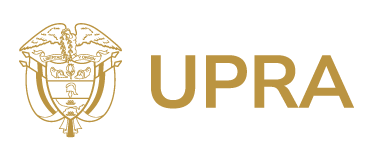PRESS ROOM
 11/3/2024
11/3/2024
Lets eat fish during Holy Week

The Ministry of Agriculture and Rural Development (MADR), along with the National Authority of Aquaculture and Fisheries (Aunap), estimate a sale of over 40,000 tons of fish during the Holy Week period.
Bogotá D.C., (@Minagricultura, @UPRAColombia, @claudialili76, @AgronetMADR). According to Colombian traditions and customs, whether believers or not, during Holy Week, or Semana Mayor, fish consumption increases. Responding to this demand, the more than 120,000 fishermen and 3,745 formalized aquaculturists in the country have managed, through their work, to guarantee a supply of various fish varieties between 28,000 and 30,000 tons.
The Information and Communication Network of the Agricultural Sector of Colombia (Agronet), based on synergies with other national and regional sectoral information management units, was able to establish that the fishing and aquaculture sector has shown an increase of 37% in its production, with the best indices in the departments of Huila (39%), Meta (11%), and Tolima (9%), as detailed in the statistical bulletin of DANE delivered at the end of the last quarter of 2023.
This increase in the sector's production coincides with the projections estimated by the Rural Agricultural Planning Unit (UPRA) in its research and publication: Planning of Aquaculture Productive Ordering, Suitable Zones for Colombia, where it is affirmed that "In the year 2023, Colombian aquaculture will have been successfully developed in continental and marine environments, through the application of comprehensive policy." And indeed, Colombia has around twenty million hectares suitable for commercial cultivation of species such as silver tilapia, cachama, pirarucu, and native species, distributed among areas with high, medium, and low suitability.
MADR has worked jointly with Aunap to restock native species in 61 wetlands to guarantee sustainability and food security. Additionally, a positioning has been achieved in international markets with the export of ornamental fish reaching the shipment of about 35,000 tons to countries such as the United States, Netherlands, Hong Kong, Mexico, Japan, France, and the United Kingdom, reflecting Colombia's potential in the commercial development of aquaculture.
When Buying
For this season, buyers are advised to check the labels, packaging, and expiration date of frozen fish. And, in the case of buying fresh fish, check that the gills are bright red and wet; the fish's eyes should be prominent, clean, and have a shiny or transparent appearance; and regarding prices, consult price bulletins available on Agronet or other agricultural sector entities.
According to the latest bulletin issued by Corabastos, a reference among wholesale markets, among the species with the lowest prices are cachama, cucha, mojarra, bocachico, and nicuro, with a cost around $12,000 per kilogram; and among the most expensive are hake and sea bass fillet between $50,000 and $54,000 per kilogram.
Agronet recommends fish consumption, beyond religious customs and traditions, because it is a food that contains essential proteins, vitamins (A and D), minerals (iodine, zinc, selenium, phosphorus), and fatty acids (mainly omega-3) known as DHA and EPA that are indispensable for normal brain development, help cardiovascular health, and improve nervous system function.
Statistical data on the livestock sector, economic indicators, and prices are available for consultation at www.agronet.gov.co, statistics module.
Statistical data on the livestock sector, economic indicators, and prices are available for consultation at www.agronet.gov.co, statistics module.

